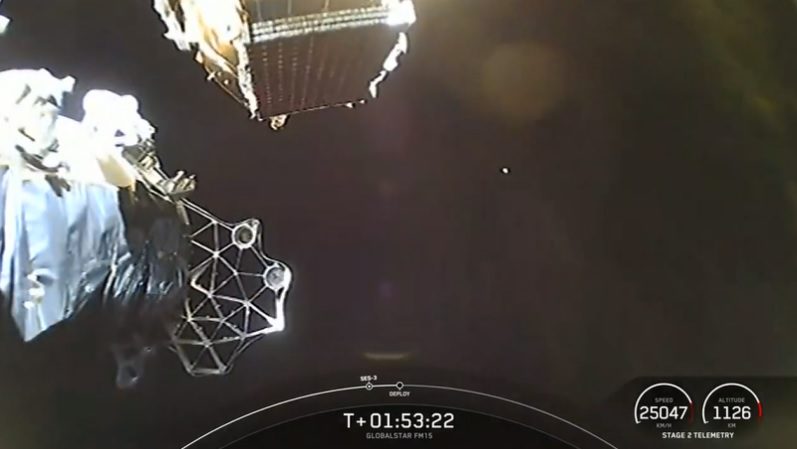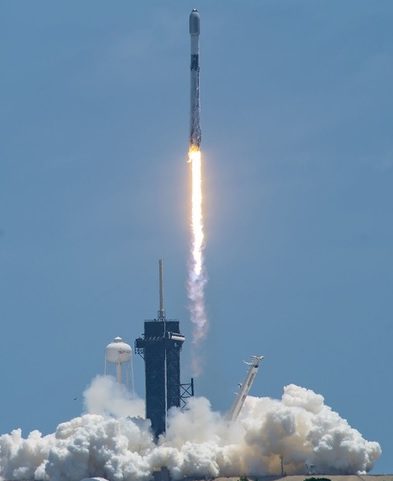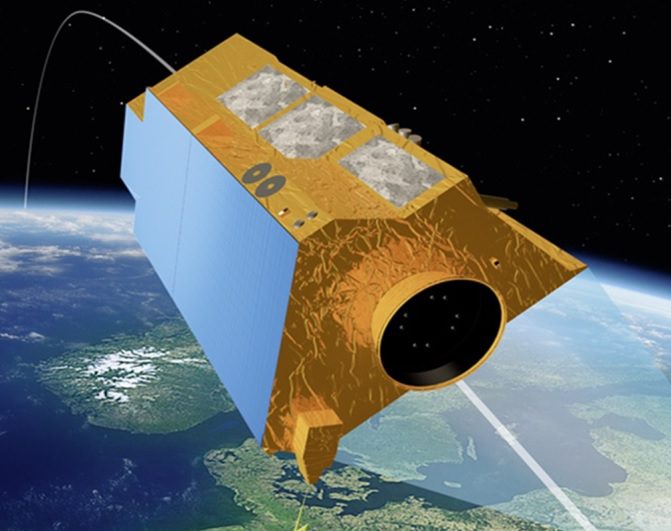In a flurry of activity, SpaceX performed three separate Falcon 9 launches in less than three days. At 1609 GMT on 17 June, a SpaceX Falcon 9v1.2FT Block 5 rocket carried 53 Starlink v1.5 Group 4-19 communications satellites to orbit for SpaceX itself. The mission lifted off from Kennedy Space Center, Florida.
The satellites were deployed into an initial delivery orbit from where they will propel themselves up to their operational orbit at 540 km. The first stage of the rocket, identified as B1060, landed on the drone barge A Shortfall of Gravitas at approximately T+ eight minutes and 48 seconds. This marks the first time a first stage has launched and landed 13 times.
Time lapse of SpaceX SARah 1 launch & landing w/ audio and marine fog. @NASASpaceflight pic.twitter.com/i2ZMXmH8an
— Jay L. DeShetler (@jdeshetler) June 19, 2022
The second launch took place from the West coast at 1419 GMT, 18 June, when a SpaceX Falcon 9v1.2F Block 5 rocket lifted off from the Vandenberg Space Force Base, California. The mission carried a German military active SAR (Synthetic Aperture Radar) satellite called SARah 1 (aka SARa Aktive 1) into a circa 750 km sun-synchronous low Earth orbit. This mission took place less than 24 hours after the first Falcon 9 lifted off from Florida.
The first stage of this Falcon 9 rocket (B1071 on its third flight) completed a “Return to Launch Site” (RTLS) landing at the designated Landing Zone 4 (LZ-4), Vandenberg Space Force Base, at approximately T+ eight minutes. Despite its military nature, Seradata understands that the satellite was insured under a multi-launch insurance policy on behalf of Airbus.

Globalstar 87 separation following its June 2022 Falcon 9 launch – but was it alone? Courtesy: SpaceX
It was back to the East Coast of the USA for the last launch. At 0427 GMT on 19 June a third SpaceX Falcon 9v1.2FT Block 5 in as many days carried a satellite that was originally a ground spare for LEO constellation operator Globalstar into orbit. This mission took place from Cape Canaveral, Florida. The first stage of the Falcon 9 landed on the drone barge Just Read the Instructions at approximately T+10 minutes and six seconds.
The second generation Globalstar satellite, named Globalstar 87, was launched into a 1,125 x 1,111 km orbit (at 52.0 degrees inclination) which is very close to its 1,414 km operational orbit. The satellite weighed just 700 kg while the rocket had the capacity to lift approximately 20 times as much. The implication, even with the very close delivery, is that there may have been more payloads on the flight than officially stated. The speculation is that there was at least one classified satellite for the US Government on board this mission.
Imagery of the Globalstar satellite separation also appears to show a new type of spacecraft adapter, hinting that a second satellite may have been released into an interim orbit of about 550 x 530 km after the first Stage 2 burn. The fact that the reusable first stage of the Falcon 9 (B1061 on its 9th flight) landed downrange – without enough propellants to return to its launch site – is thought to be another indicator that a second payload was aboard.
Update on 21 June 2022: It was later confirmed that there were four undisclosed US satellites on board with the codenames USA 328, USA 329, USA 330 and USA 331. The exact nature of these spacecraft remains secret. An earlier Falcon 9 flight on the Transporter 3 mission in January similarly carried four “mystery” US satellites: USA 320, USA 321, USA 322 and USA 323.
David Todd contributed to this story










